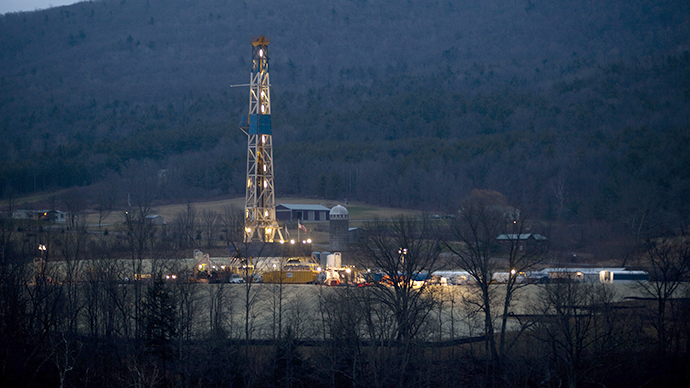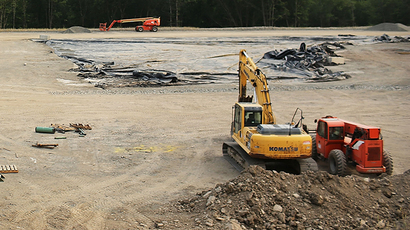‘Alarming’ presence of radioactivity found by Pennsylvania fracking wastewater study

Researchers have found high levels of radioactivity, salts, and metals in water and sediment located downstream from a treatment facility which processes fracking wastewater from oil and gas production sites in Pennsylvania’s Marcellus shale formation.
A Duke University team analyzed water and sediment samples from
the Josephine Brine Treatment Facility in Indiana County,
Pennsylvania, finding radium levels 200 times greater than
samples taken upstream from the plant and far higher than what’s
allowed under the Clean Water Act.
Radium is a radioactive metal that can cause diseases like
leukemia and other ill-health effects if one is exposed to large
amounts over time.
The treatment facility processes flowback water - highly saline
and radioactive wastewater that resurfaces from underground after
being injected into rocks in the fracking, or hydraulic
fracturing, process.
Fracking is the extraction of oil and gas by injecting water to
break rock formations deep underground. Use of the process has
increased rapidly in the US in recent years, yet scientists who
have studied the practice warn of climate-damaging methane emissions and radioactive effects that come
with it.
The study was published Wednesday in the Environmental Science
and Technology journal. It focuses on two years of tests on
wastewater flowing through Blacklick Creek from oil and gas
production sites in western Pennsylvania’s Marcellus shale
formation.
For two years, the Duke team monitored sediment and river water
above and below the treatment plant, as well as discharge coming
directly from the plant, for various contaminants and levels of
radioactivity. In the discharge and downstream water, researchers
also found high levels of chloride, sulphate, and bromide, which
can interact with chlorine and ozone - used to disinfect river
water for drinking -to create a toxic byproduct.
“The treatment removes a substantial portion of the
radioactivity, but it does not remove many of the other salts,
including bromide,” said study co-author Avner Vengosh, a
Duke professor of geochemistry, adding that traditional
facilities like Brine aren’t made to remove these contaminants.
Though the Brine treatment facility strips some radium from
fracking wastewater, high levels of metal still accumulate in
sediment.
"The occurrence of radium is alarming - this is a radioactive
constituent that is likely to increase rates of genetic mutation"
and can be "a significant radioactive health hazard for
humans," said William Schlesinger, a researcher and
president of the Cary Institute of Ecosystem Studies, who wasn't
involved in the study.
Researchers believe the contaminants come from fracking sites
because the Brine facility treats oil and gas wastewater which
has the same chemical features as rocks in the Marcellus shale
formation.
Some fracking wastewater is shipped by oil and gas companies to
treatment plants like Brine to be processed and released into
waterways. But most wastewater is reused for more fracking, Lisa
Kasianowitz, an information specialist at the Pennsylvania
Department of Environmental Protection, told ClimateCentral.org.
Kasianowitz said the treatment facility is handling
"conventional oil and gas wastewater in accordance with all
applicable laws and regulations.”
Vengosh said that the research indicates that similar
contamination may be happening around other fracking locations
along the Marcellus shale formation in Pennsylvania, Ohio, and
New York.














